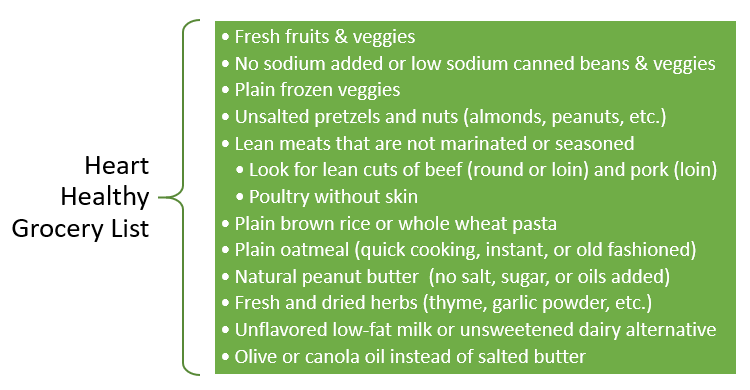I don’t put salt on my food, so I don’t have to worry about sodium.
Fiction. Sodium is found in more than just the saltshaker. In fact, over 70% of sodium in the American diet comes from processed, packaged, and restaurant foods. Sodium is added to a variety of popular foods during processing and preparation. As a result, most Americans consume double the amount of recommended sodium each day. Excess sodium intake can lead to high blood pressure which increases the risk of heart disease, stroke, and kidney disease. The good news is that making simple changes can help you stomp out excess sodium in your meals and snacks.
What are the top food sources of sodium?
- Sodium is found in many processed foods including bread, pizza, sandwiches, soups, tacos, condiments (soy sauce, salad dressing, etc.), snack foods (pretzels, chips, popcorn, etc.), deli and cured meats (bacon, hot dogs, sausages, etc.). Check out the CDC website to learn more about sodium and food sources.
How can I make small lifestyle changes to reduce my sodium intake and improve my health?
- Cutting down on your portion sizes and making simple changes while grocery shopping can help you lead a healthy lifestyle. When you’re at the supermarket, look for “unsalted” or “low sodium” varieties of food including nuts, condiments, pasta sauces, and frozen and canned beans and vegetables. Also, keep in mind the nutrition facts label on packaged food items will always include the sodium content per serving. One quick trick to see if a food product is high in sodium is to look at the percent daily value (%DV) on the far-right side of the food label. If one serving has 5% or less of your daily value of sodium this is considered a low-sodium food. If the serving is 20% or higher, this indicates a high-sodium food. The American Heart Association recommends healthy adults eat less than 2300 milligrams of sodium daily.
- Below is a sample grocery list that focuses on heart-healthy choices. Use this as a guide the next time you are grocery shopping to help you make better choices. A quick breakfast idea could be combining ½ cup oatmeal with one to two tablespoons peanut butter (about the size of a ping-pong ball), and a sliced banana.

Ditching the Salt Habit: Utilizing Herbs
Fresh and dried herbs are a great way to add a kick of flavor to meals without adding unwanted sodium. Many pre-made seasoning mixes are high in sodium unless they’re labeled as “salt-free” or “no salt.” For a heart-friendly alternative, try making your own seasoning blends using dried herbs and spices at home. Below are a few seasoning blend recipes that would be great for vegetables, meat, and poultry.
Seasoning Blend Recipes
Directions: Mix the ingredients together and store in an air-tight container. Sprinkle a blend on meats and veggies.
Mixed Herb Blend
- ¼ cup dried parsley flakes
- 2 tablespoons dried tarragon
- 1 tablespoon each of dried oregano, dill weed, and celery flakes
Italian Blend
- 2 tablespoons each of dried basil and dried marjoram
- 1 tablespoon each of garlic powder and dried oregano
- 2 teaspoons each of thyme, crushed dried rosemary and crushed red pepper
Mexican Blend
- ¼ cup chili powder
- 1 tablespoon each of ground cumin and onion powder
- 1 teaspoon each of dried oregano, garlic powder and ground red pepper
- ½ teaspoon cinnamon
Interested in using fresh herbs? Watch this cooking video from the American Heart Association for simple and nutritious ways to use and store fresh herbs.
Seasoning blend recipes courtesy of the Academy of Nutrition & Dietetics
Written by BWS Dietitian-Melissa Morningstar Vajas RD, LD
